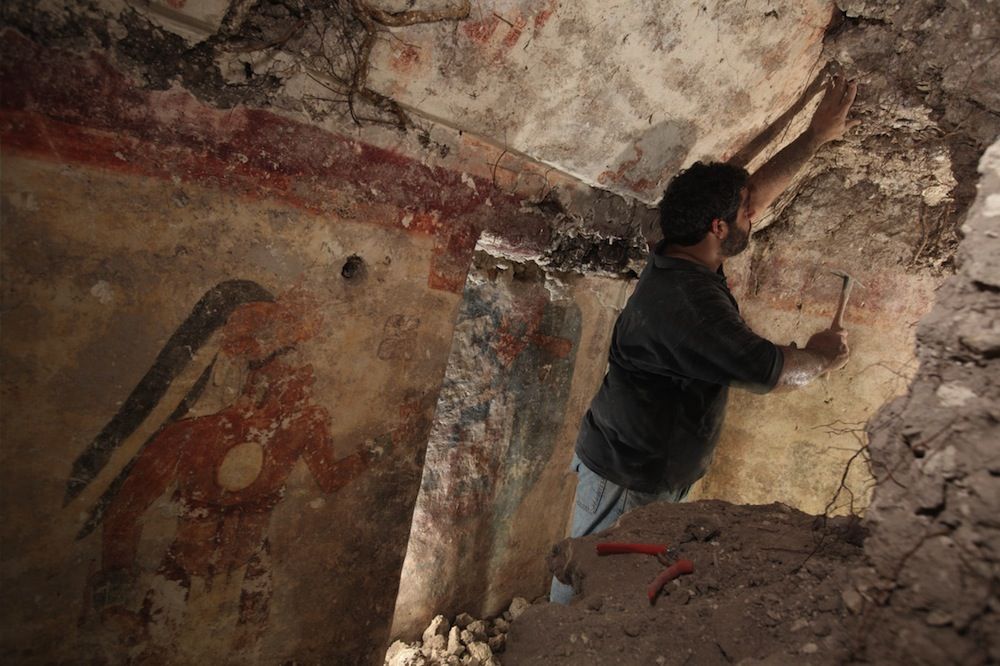4 Days 'Til Doomsday? Not Really

The end is near, according to some — but experts say not to put stock in the Mayan Apocalypse rumors that claim the world will end on Friday.
The date, Dec. 21, 2012, corresponds with the end of the 13th b'ak'tun of the ancient Maya Long Count Calendar. This calendar is one of several developed by the Central American empire that collapsed around A.D. 900. The 400-year-long b'ak'tun is only one of the units of time the Maya used to mark cycles in their calendar, according to University of Texas Maya hieroglyph expert David Stuart. The complex, cyclical calendar included at least 24 different units of time both shorter and longer than b'ak'tuns, Stuart said.
That doesn't mean, however, that the Maya believed the world would end at the completion of the 13th b'ak'tun. The oldest Maya calendar painting ever discovered, for example, includes calculations of 17 b'ak'tuns. And the Maya had 24 units of time they included in their calendar, according to University of Texas Maya hieroglyph expert David Stuart, with b'ak'tuns representing only one unit. In other words, the Maya were well-prepared to record thousands upon thousands of years of time.
Doomsday rumors arose only when a handful of Westerners got hold of the Maya calendar concept in the 1980s and 1990s, said Lorenzo DiTommaso, a professor of religion at Concordia University in Montreal. Either misunderstanding or intentionally ignoring the Mayans' cyclical view of time, these writers interpreted the end of the 13-b'ak'tun cycle "in a Biblical way," DiTommaso told LiveScience. In other words, as an apocalyptic, life-ending event.
The online world has only exacerbated this strange cultural clash.
"The apocalyptic version got out on the Internet, and people started talking about it and modifying it and proposing things that could be added to it," DiTommaso said.
Now, doomsday theories range from the hopeful (that the world will experience a shift in consciousness or that there will be universal peace) to the downright gloomy (that a rogue planetary collision or sudden shift in Earth's magnetic poles will destroy the planet). [2012 Doomsday Myths Debunked by NASA]
Sign up for the Live Science daily newsletter now
Get the world’s most fascinating discoveries delivered straight to your inbox.
Apocalyptic predictions are nothing new, dating back at least to Jewish apocalyptic writings of the third century B.C., said Allen Kerkeslager, a religious studies professor at Saint Joseph's University in Philadelphia. Early Jewish scholars, in turn, got their apocalyptic ideas from Persian Zoroastrians, who ruled the Jewish people from 539 B.C. to 333 B.C., Kerkeslager told LiveScience. Apocalyptic Jewish thinking later inspired early Christians, injecting a thread of doomerism into Western thought that persists today.
If history is any guide, the Mayan doomsday will pass much like 2011's apocalypse scare, when radio preacher Harold Camping predicted that Judgment Day would occur on May 21, followed by the end of the world in October. After the non-event, Camping admitted he was wrong and said he would not be predicting any more dates for doomsday. Even so LiveScience will have full coverage of the Mayan Doomsday (Not).
Follow Stephanie Pappas on Twitter @sipappas or LiveScience @livescience. We're also on Facebook & Google+.

Stephanie Pappas is a contributing writer for Live Science, covering topics ranging from geoscience to archaeology to the human brain and behavior. She was previously a senior writer for Live Science but is now a freelancer based in Denver, Colorado, and regularly contributes to Scientific American and The Monitor, the monthly magazine of the American Psychological Association. Stephanie received a bachelor's degree in psychology from the University of South Carolina and a graduate certificate in science communication from the University of California, Santa Cruz.












